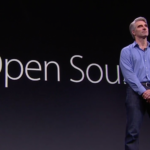OpenAI’s AI image generator DALL-E 3 is finally catching up to rivals such as Midjourney by adding image editing features to the AI model. The startup has announced image editing features directly within ChatGPT, providing a more streamlined way to customize AI-generated images.
The new DALL-E editor allows users to select a specific area of an image and make changes to it by describing the changes in the chat. This can be done without using the selection tool as well by simply providing a desired prompt in the conversation panel.
The editor’s current range of abilities includes adding, removing, or modifying objects within an image as well as changing the characteristics of a specific part of the AI-generated image. This editor can be accessed by clicking an image created by DALL-E 3 and is available on the web as well as the ChatGPT mobile apps.
OpenAI provides users with a range of options to highlight the part of the image that needs to be edited, including the selection tool. The size of the selection tool can easily be changed through a button on the top left of the editor. OpenAI recommends using a large space around the area that requires an edit for better results.
There is also an option to undo and redo the selection in case users make the wrong selection. There is an additional “Clear Selection” button to start over entirely.
The editor can be used in several ways such as highlighting the top corner of the image and using the prompt “Add cherry blossoms,” it provides the following results.

Meanwhile, removing objects from an image is as simple as highlighting the desired area and typing in the prompt “remove birds.”
Other than adding or removing objects, it can also alter aspects of an image, such as changing the expression of the cat in the image.

Once done editing an image, users can save it on their devices by pressing the save button on the top right which looks like a download icon. The same features are available on the mobile versions of ChatGPT on Android and iOS.
More details can be found on OpenAI’s blog.






